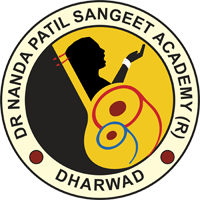Hindustani Music and Performing Arts
This is the north Indian style of Indian classical music (sastriya sangeeta). It has been evolving since the 12th century due to Arabic / Persian influences and royal families’ patronage. It is one of the two important musical styles in India, and the other is Carnatic (south Indian) music. Hindustani music is alive in the entire Indian sub-continent Dangduf, the classical music of Indonesia is also similar in nature. Sufi music is also an influence. Pandits / Ustads sing it heartily.
There are many styles/ gharanas in Hindustani music. The central notion in Indian music is that of melodic mode or raga sung to a rhythmic cycle or tala. Both Bharata’s Natyasastra (2-3 c AD) and Dattitam (3-4th c AD) refer to this. In the medieval times the Sufi ustads like Amir Khusru fused the melodic systems with the ideas from Persian music. In the 16th century different princely states patronized different styles/ gharanas. In the 20th century Pt Vishnunarayan Bhatkhande consolidated the musical structures called ragas into thaats.
Hindustani music has seven basic notes with five interspersed half-notes, resulting in a 12-note scale. Gradually harmonium replaced sarangi. The performance is set to a melodic pattern called raga characterized in part by aroha (specific ascent) and avaroha (descent) sequences. The other characteristics include king (Vadi) and queen (Samavadi) notes and characteristic phrases (pakad) and each raga has its natural register (ambit) and portamento (meend) rules. There can be improvisation within the ragas.
The history of Hindustani music has several periods – Samskritic tradition, medieval period and modern era.
The types of compositions include Dhrupad, Khyal, Tarana, Tappa, Thumri and Ghazal. There are many music festivals in the country besides radio, TV, and public performances and private patronizations. Hindustani music has a good background in Dharwad, Gadag and Belgaum in Karnataka. The Wadeyas of Mysore started Dasara Mahotsava where concerts in Hindustani music as well as the others began in the 19th century, encouraging the northern traditions in teaching and entertainment.
Ustad Abdul Karimkhan (1872-1937) stayed in Dharwad, teaching music to Sawai Gandharva, whose disciples include Pt Bhimasen Joshi and Dr Gangubai Hanagal. Pt Panchaksari Gawai’s disciples include Pt Puttaraj Gawai, Pt Basavaraj Rajguru, Siddaram Jambaladinni and others. Pt Neelakanthabuva Mirajkar (Gwalior style) prepared great artists like Pt Mallikarjun Mansur (Jaipur style). Sitar Ratna Ramhat Khan of Indore settled down in Dharwad and imparted education in sitar. Pt Rajiv Taranath achieved greatness in sarod. Other great Hindustani artists are Pt Rajashekhar Mansur, Pt Panchaksariswami Mattigatti, Kumar Gandharva, Sangameshwar Gurav, Basavaraj Bendigeri, Vidushi Sharada Hanagal, Vasant Kanakapur, Pt Venkatesh Kumar, Mr Raghunath Nakod, Dr Nanda Patil, Kaivalya Guruva, Praveen Godkhindi, Sangeeta Katti and others.
Hindustani musicians from Karnataka have achieved world renown. They have got Tansen Sanman, Tulasi Sanman and state and central sangeeta nritya academy honors. Pt Mansur, Pt Kumar Gandharva, Pt Rajguru, Pt Puttaraj Gawai and Dr Hanagal have received Padmavibhusan, and Pt. Joshi has got Bharataratna.
Dr Nanda Patil Sangeeta Academy aims at art education in performing arts too. It conducts trainings, workshops and special lectures in literature, theatre, language, translation, creative writing, theatre, painting, dance and sculpture

